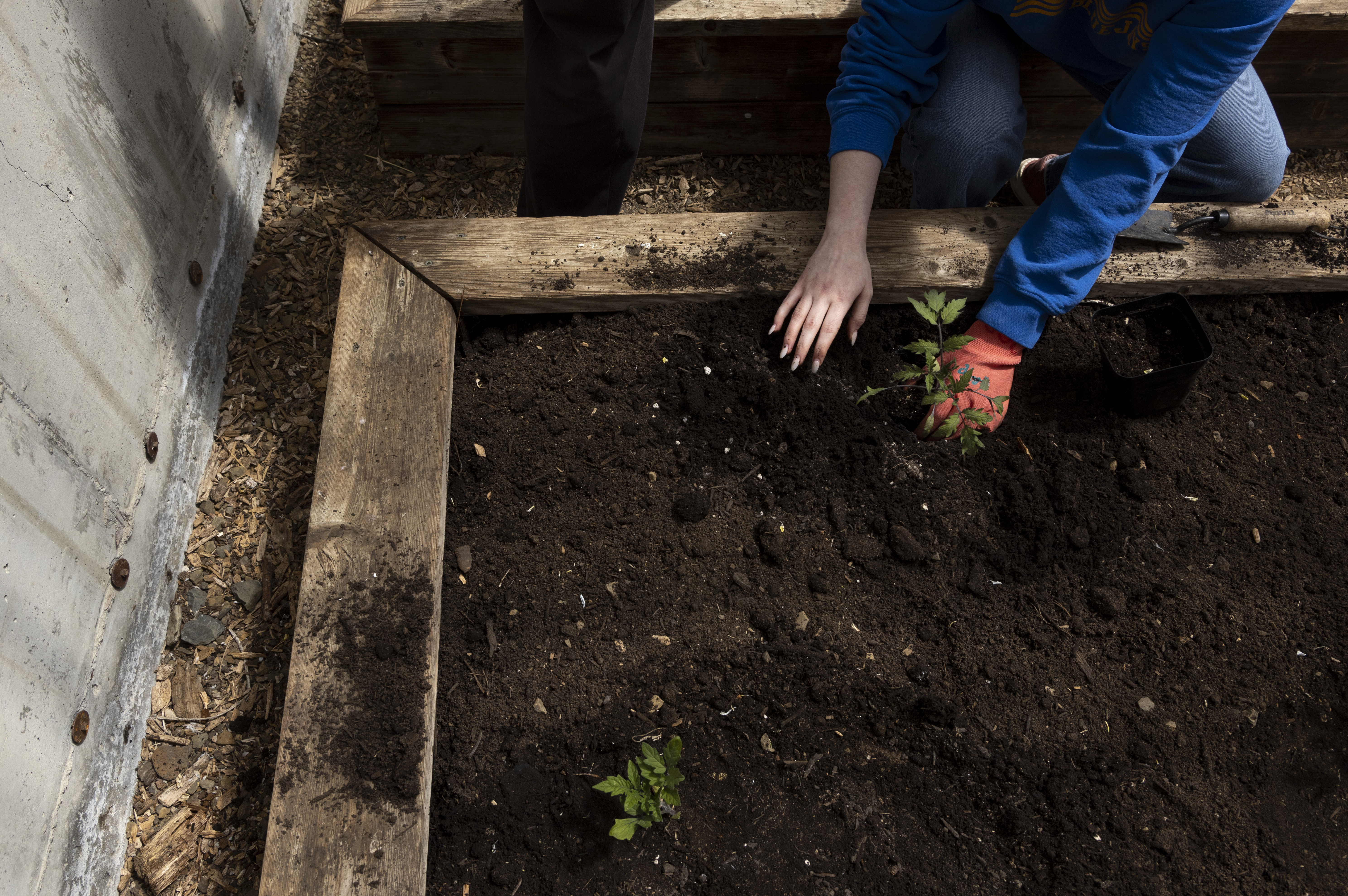Jewell School garden grows community
Published 12:24 pm Friday, June 13, 2025


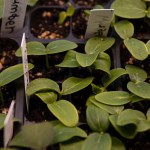
JEWELL — On a recent morning in May, most students at the Jewell School were cracking open textbooks, starting worksheets and settling into lessons on reading, math and science.
Eighth graders in Martha Stephens’ class were sifting through a blue plastic tub of gardening gloves — ready to get their hands dirty.
Like most anyone in the small, rural community of Jewell, Stephens is well aware of the lengths it takes to get a bag of groceries. A trip to the supermarket is anywhere from 45 minutes to an hour, depending on which route you go. That’s why three years ago, after starting a position as a part-time wellness coordinator at the school, she applied for a grant to start a community garden with hopes of bringing more fresh food to campus.
If the vibrant rows of strawberries, blueberries and chives that have sprouted up on the property behind the school are any indication, that plan has been working — and now, students like the eighth graders are helping it thrive and grow.
A transformation
After filing into the home economics room just after 10 a.m., it didn’t take long for Stephens’ students to get to work — first spritzing a shelf of delicate tomato starts with water, then making their way through the school’s back doors and past the athletic field, two buckets of food scraps in tow. At their destination, they wasted no time grabbing shovels and lifting up a pair of tarps, one revealing a heaping compost pile topped with watermelon rinds and bolted broccoli plants and the other revealing a hill of rich topsoil.
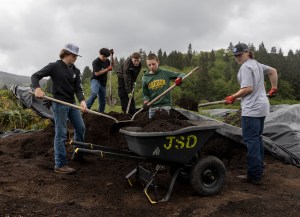
Eighth grade students fill a wheelbarrow with soil during a work day at the Jewell School garden on Wednesday, May 14. Photo by Lukas Prinos.
The space Stephens has helped create is a sight to see: to one side of the compost pile, wooden raised beds fill a longstanding greenhouse. To the other side, a garden area boasts 22 rows of 60-foot-long planting beds, a row of fruit trees and two rows of berries.
It didn’t always look like that, though.
Stephens said that when she applied for funding the first year, she wasn’t sure she’d get it. The grant in question — a $10,000 award from the Oregon Department of Education — was highly competitive, and she’d never applied before. But after receiving the initial award, it was clear that she couldn’t stop there.
The first year, Stephens met periodically with kindergarten through fifth graders and worked with volunteers to get a fence set up and planted about half the garden. The goal, she said, was to involve students in every step of the process; Mr. Ray’s shop class, for example, came out to help brace fence posts, while Mr. Veit’s math class and Mr. DeWees’ science class helped plan layout and prep the garden rows. Meanwhile, younger students worked inside planting fruits and vegetables from seed.
“By year one, we noticed how robust this garden was becoming, and we thought, ‘Okay, we can actually feed kids in the building,’” said interim superintendent Cory Pederson. “So now it started to turn into an idea of, ‘Okay, so if kids are going to be taking food from the garden and we’re going to be able to grow that, why not embed that into our system, into our schedules, and get them involved with it?’”
So, in year two, Stephens started meeting with a different grade level every day. By the end of that year, the garden was fully planted.
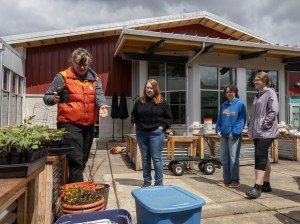
Martha Stephens, left, explains the day’s gardening tasks to special education teacher Moira Hammerberg and a group of high school seniors. Photo by Lukas Prinos.
“Growing a garden seems like easy peasy, but you have to have a lot of infrastructure for good soil and things like that,” she said. “And so we continued to work on the soil, and then we built 15 raised garden beds for our courtyard garden, which is inside of the school, because what we realized with the elementary was it was really hard for the little kids to get up to the barn and not be totally wiped out. So bringing the garden down here really made it more accessible to them.”
Now, Stephens has just wrapped up a third year co-teaching horticulture culinary classes with seventh and eighth grade science teachers, plus an intro to agriculture class for high schoolers and weekly classes with elementary students.
“It’s been really cool,” said Abby DeWees, a recent senior who originally got involved as a volunteer. “It’s kind of been surprising, because I wasn’t sure the full vision for creating the garden, but then once we started actually building it, I was like, ‘Oh, wow. This is gonna be way bigger than I thought.’”
“It’s like a circle”
By the end of their class period, Stephens’ eighth graders had hauled at least a dozen wheelbarrows’ worth of topsoil into the greenhouse, filling the raised beds to make a welcome home for new tomato plants. Walking back through the misty mid-morning, a few began to list the foods they were most excited to eat from the garden — from fresh strawberries and microgreens to chives in their burritos.
If there’s one place the Jewell School’s garden program has left its fingerprints, it’s the cafeteria.
Heidi Olson-Foster has worked in the kitchen for three decades and has been the school’s director of food services for 15 years. She said she’d always wondered what might be possible on the property behind the school — and when Stephens first got a grant to start a garden, she started to see things fall into place.
“I think she saw the vision, too,” Olson-Foster said. “Our campus is like a canvas — it’s like, whatever artistic person that comes in, they can do something because it’s big and it’s open, and it’s just waiting for the next great thought.”
In the fall, Olson-Foster said the lettuce, carrots and tomatoes from the garden fill the entire salad bar, with practically no need to supplement with purchased vegetables. Potatoes usually last through the early winter, and any berries they don’t serve fresh are frozen.
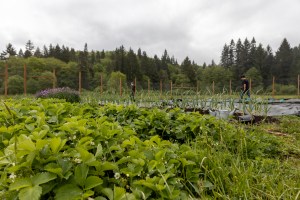
A variety of plants including strawberries, garlic and tomatos are grown at the Jewell School garden. Photo by Lukas Prinos.
A crowd favorite, Olson-Foster said, is broccoli from the garden — especially when it’s baked with butter and parmesan cheese.
“It’s crazy how these kids, it’s like, they look for it, you know,” she said. “And they love it.”
Fresh produce can also be sent home with students to share with their families, used in the school’s culinary classes and served in meals through the district’s summer lunch program.
What the students see on their plate is directly connected to the work they put in throughout the year. In January and March, they start growing seeds under grow lights. Then, from March through May, they continue planting and begin prepping the garden and transplanting outside. Over the summer, Stephens and a handful of dedicated volunteers tend the garden — and by the time students return in the fall, the rows are bursting with fresh raspberries, cucumbers, kale and more. Last year, the garden produced enough pumpkins to send one home with every single student, from kindergarten through sixth-grade.
Even after harvest, though, Stephens finds ways to engage students, working on projects like mulching and pulling irrigation.
“It’s like a circle,” Stephens said. “Like you can’t have one part of food production without another in order to have that whole unit. And so it’s great if the kids can take a seed from a packet and put it in soil, but like knowing why that soil is going to grow that seed, and the other parts like having sunlight or photosynthesis and water, and then once you harvest that food we have a really great composting system here now as well.”
“Ever-growing”
As the garden program continues, Stephens has high hopes for expanding and improving — like adding row covers, redoing the greenhouse and starting a garden club for students throughout the summer. Earlier this year, the school also received a bee grant through the Whole Kids Foundation and the Bee Cause Project to help bring a hive to the school garden.
“It’s like ever-growing and building, and it’s really exciting to see the kids and young adults just like thriving in a very hands-on outdoor experience,” she said.
That growth doesn’t happen alone. The garden has received monetary support from two different state Department of Education grants, an Oregon AG Fest grant, the bee grant and around $2,500 for supplies through participation in a Northwest Regional Education Service District place-based learning training. It also has received strong support from Jewell’s administration, teachers and students, and at least 1,000 hours of work from volunteers.
As the school looks to expand its agriculture program, Pederson said it’s also begun forming partnerships with Tillamook Community College and the Astoria and Rainier school districts to broaden its network and increase knowledge. Like many at the Jewell School, he’s excited to see the future of this project Stephens has spearheaded.
To him, the garden hasn’t just grown fruits and vegetables — it’s grown authentic connections.
“This is a great community. We’ve got great kids out here, we have visions, we have growth, just like every other school district,” Pederson said. “We definitely matter out here, and so getting those opportunities for our kids and our adults to find success — and I do mean together, I really believe that’s how this has worked. It’s so authentic that all the dreams that we talk about for our kids also hold true for everybody else in the district that are not kids.”


